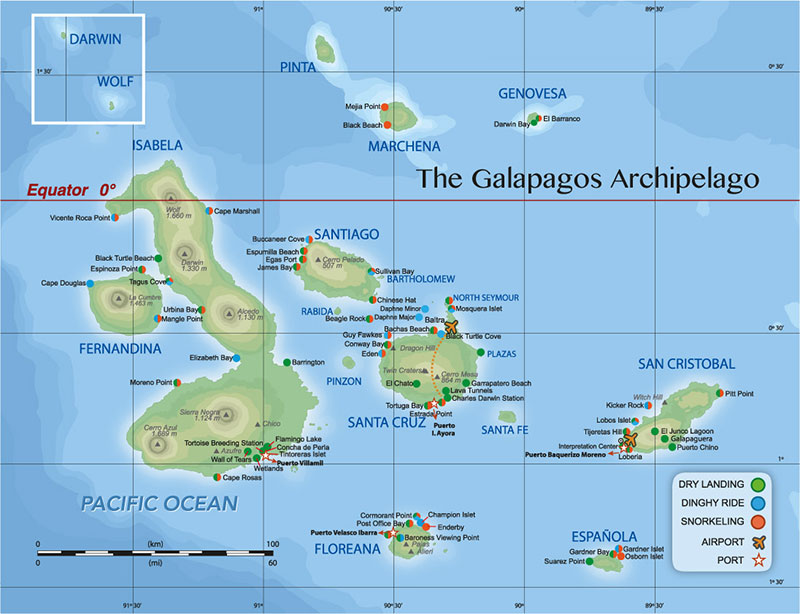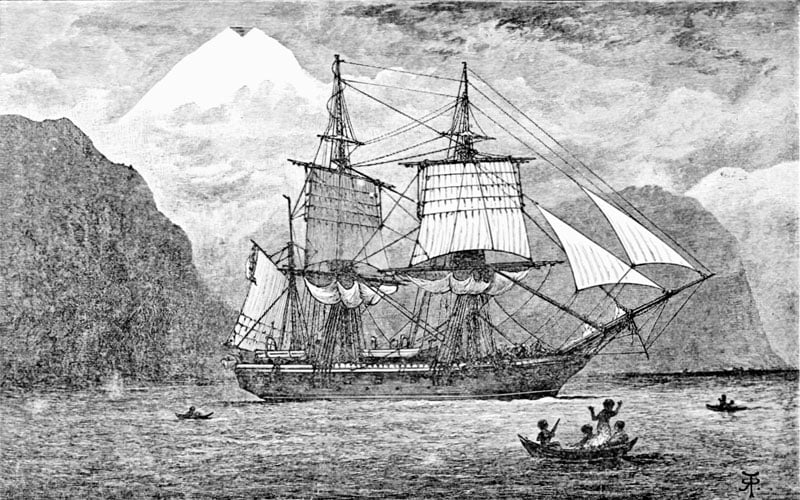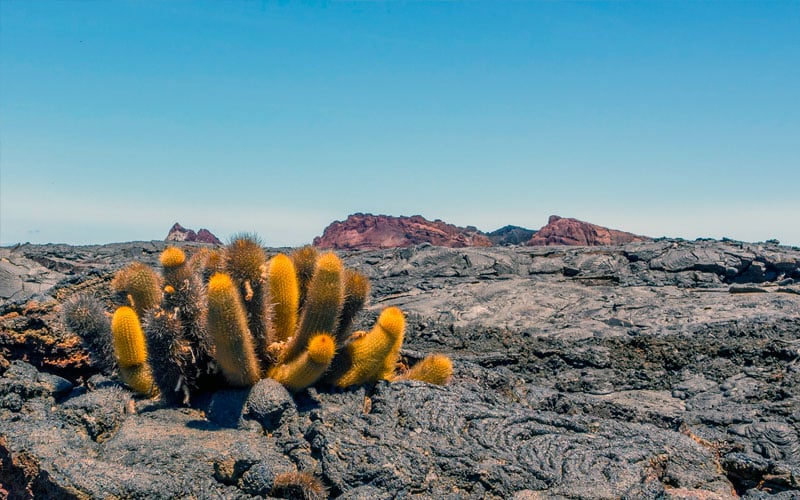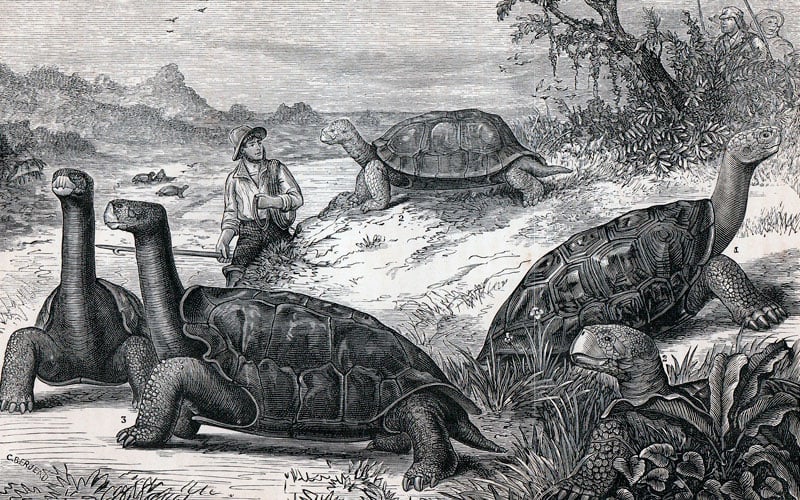Famous for its rich biodiversity and place of Charles Darwin’s research on the theory of evolution, the Galapagos Islands are situated approximately 1,000 km (or a little over 600 mi.) from the Ecuadorian mainland.
The volcanic archipelago consists of 13 main islands of which only five are inhabited. These islands are home to a unique diversity of plant, animal, and marine life that regularly attract tourists and nature lovers alike, including sea lions, land and marine iguanas, giant tortoises and of course, Lonesome George, the only known living tortoise of his species.

General Information
Official Name: Archipiélago de Colón
Political Ecuadorian Name: Provincia de Galápagos
Capital: Puerto Baquerizo Moreno
Population: 40,000
Demonym: Galapageño/a
Official Language: Spanish
Official Currency: Dollar (USD $)
Total Land Area: 4897 sq. milen / 7880 sq. km
Total Geographical Area (Stretching from Charles Darwin Island to Espanola and San Cristobal): 28,000 sq. miles (45,000 sq. km)
Highest Point: Volcano “Volcan Wolf” on Isabela Island at 1707m / 5600 ft.
Major Islands: Baltra (airport) , Española, Fernandina, Floreana, Genovesa, Isabela (airport), Marchena, Pinta, Pinzón, San Cristóbal (airport), Santa Cruz, Santiago, Santa Fe

Interesting Facts
- Galapagos” is what Bishop Tomas of Panama named the giant tortoises upon an accidental encounter of the islands and its animals in 1535.
-
The Galapagos is a UNESCO World Heritage Site
-
97% of the islands are protected by the Galapagos National Park. Only 3% is inhabited by humans.

Geology
Geology:
Formed between 3 million and 5 million years ago, the Galapagos Islands are relatively young.
The islands are situated over a hot mantle, burning through the earth’s crust and generating volcanic activity. Eruptions pile on previous eruptions eventually surfacing the ocean.
In general, each island is created by one individual large volcano whose eruptions cause basaltic lava to flow expanding its shores. The island of Isabela, however, is the result of six different volcanoes that flowed into each other.
In the past 200 years, the islands have experienced some 50 eruptions.

Natural History
The Galapagos Islands possess an interesting history regarding human inhabitants. In 1535 Tomas de Berlanga, the Bishop of Panama, discovered the islands by chance on his way to Peru when currents pushed his ship off course. Although he did not name the islands, he coined the name “Galapagos” after the giant tortoises. English buccaneers later visited many of the islands. These pirates began to name individual islands after famous captains as well as English kings and aristocracy. For this reason the islands often have two names, an English name and a Spanish name. In the late eighteenth and early nineteenth century, British and American whaling ships frequented the waters around the islands. Around this time a British captain created a means of communication by placing a barrel that would serve as a Post Office on Floreana Island. This Post Office still exists today and is an attraction for many tourists.
The first inhabitant of the Galapagos Islands was Patrick Watkins. He grew vegetables on Floreana Island to exchange for rum with approaching ships. However, he later left the island with a group of sailors who were never seen again, while Watkins arrived and settled in Guayaquil. In 1832 General Jose Villamil from Ecuador founded a colony, and in the same year Colonel Ignacio Hernandez took over the islands and they were given Spanish names. Later, Norwegian fisherman and German philosophers were attracted to the island, most of whom were accompanied by strange fates. For further reading on these mysterious stories, please see our Galapagos Book Section. (The Curse of the Tortoise by Octavio Latorre and My Father’s Island by Johanna Angermeyer)
In 1835, Charles Darwin arrived to the Galapagos Islands on the Beagle where he spent a near six weeks. These six weeks however proved to be enough for Darwin to explore and observe the animals on the islands. The isolation of the islands allowed species to evolve and adapt to their surroundings. Darwin even noted particular adaptations to conditions of individual islands. He also observed how tame the animals were due to lack of predators. Today one can still observe this rare behavior: animals on the islands live in harmony and do not seem disturbed by human presence. Darwin’s observations provided the foundation for his theory of evolution.
Today, the Galapagos has a fast-growing population and is now home to over 40,000 people. Although human settlement is restricted to only 3% of the islands (97% of the archipelago is protected by the National Park), the effect that this growing population along with the 180,000 tourists that visit the islands has on the islands is becoming perilous. Several organizations have now made it their mission to pursue Galapagos conservation projects.
